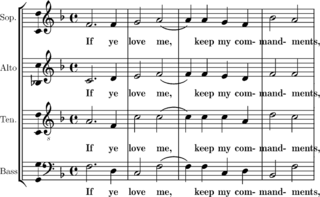Opera buffa is a genre of opera. It was first used as an informal description of Italian comic operas variously classified by their authors as commedia in musica, commedia per musica, dramma bernesco, dramma comico, divertimento giocoso.

Pietro Bembo, O.S.I.H. was an Italian scholar, poet, and literary theorist who also was a member of the Knights Hospitaller, and a cardinal of the Roman Catholic Church. As an intellectual of the Italian Renaissance, Pietro Bembo greatly influenced the development of the Tuscan dialect as a literary language for poetry and prose, which, by later codification into a standard language, became the modern Italian language. In the 16th century, Bembo's poetry, essays, books proved basic to reviving interest in the literary works of Petrarch. In the field of music, Bembo's literary writing techniques helped composers develop the techniques of musical composition that made the madrigal the most important secular music of 16th-century Italy.
In music, a villanella is a form of light Italian secular vocal music which originated in Italy just before the middle of the 16th century. It first appeared in Naples, and influenced the later canzonetta, and from there also influenced the madrigal.
The music of Belgium is a cultural mix where Flemish Dutch-speaking and Walloon French-speaking traditions mix with those of German minorities and of immigrant communities from Democratic Republic of the Congo or other distant countries.
Claudio Saracini was an Italian composer, lutenist, and singer of the early Baroque era. He was one of the most famous and distinguished composers of monody.

In music, homophony is a texture in which a primary part is supported by one or more additional strands that flesh out the harmony. One melody predominates while the other parts play either single notes or an elaborate accompaniment. This differentiation of roles contrasts with equal-voice polyphony and monophony. Historically, homophony and its differentiated roles for parts emerged in tandem with tonality, which gave distinct harmonic functions to the soprano, bass and inner voices.
Italian folk music has a deep and complex history. National unification came quite late to the Italian peninsula, so its many hundreds of separate cultures remained un-homogenized until quite recently compared to many other European countries. Moreover, Italian folk music reflects Italy's geographic position at the south of Europe and in the center of the Mediterranean Sea: Arabic, African, Celtic, Persian, and Slavic influences are readily apparent in the musical styles of the Italian regions. Italy's rough geography and the historic dominance of small city states has allowed quite diverse musical styles to coexist in close proximity.
Clement Liebert was a Franco-Flemish singer and composer of the early Renaissance, active in Rome and at the Burgundian court.
Francesco Cellavenia was an Italian composer of the Renaissance, active in Casale Monferrato.

Girolamo Parabosco was an Italian writer, composer, organist, and poet of the Renaissance.
Giovanni Ferretti was an Italian composer of the Renaissance, best known for his secular music. He was important in the development of the lighter kind of madrigal current in the 1570s related to the villanella, and was influential as far away as England.
Antonino Barges was a Franco-Flemish composer of the Renaissance, active in Venice and Treviso. While known as a composer of light popular secular forms such as the villotta, he also wrote motets and a Requiem. He was a friend and probably a student of Adrian Willaert, the founder of the Venetian School, and was listed as a witness to Willaert's last will and testament.
Gioseppe Caimo was an Italian composer and organist of the Renaissance, mainly active in Milan. He was a prolific composer of madrigals and other secular vocal music, and was one of the most prominent musicians in Milan in the 1570s and early 1580s.
Giovanni Domenico da Nola was an Italian composer and poet of the Renaissance.
Francesco Rovigo was an Italian composer and organist of the late Renaissance, active in Mantua and Graz.

Moresca (Italian), morisca (Spanish), mourisca (Portuguese) or moresque, mauresque (French), also known in French as the danse des bouffons, is a 15th/16th century pantomime dance in which the executants wore Moorish costumes. One such is the concluding music of Monteverdi's L'Orfeo. One of the best examples of the moresca can be seen in Franco Zeffirelli's 1968 production of Romeo and Juliet, which has a scene with moresca characters and lavish, florid portrayal of the dance in the Capulet home.
Girolamo Conversi was an Italian composer of the late Renaissance. His music, which was popular from the 1570s through the 1590s, was noted for its combination of the light canzone alla napolitana with the literary and musical sophistication of the madrigal. He appears to have written only secular vocal music.
Spanish opera is both the art of opera in Spain and opera in the Spanish language. Opera has existed in Spain since the mid-17th century.
Giovan Leonardo Primavera was an Italian Renaissance composer and poet. Born in Barletta, he spent most of his working life in Naples, with some time in other Italian cities such as Venice, Milan, and Loreto.
Giovan Tomaso di Maio was an Italian composer. His villanelle, like those of Giovanni Domenico da Nola, were popular throughout Italy.



